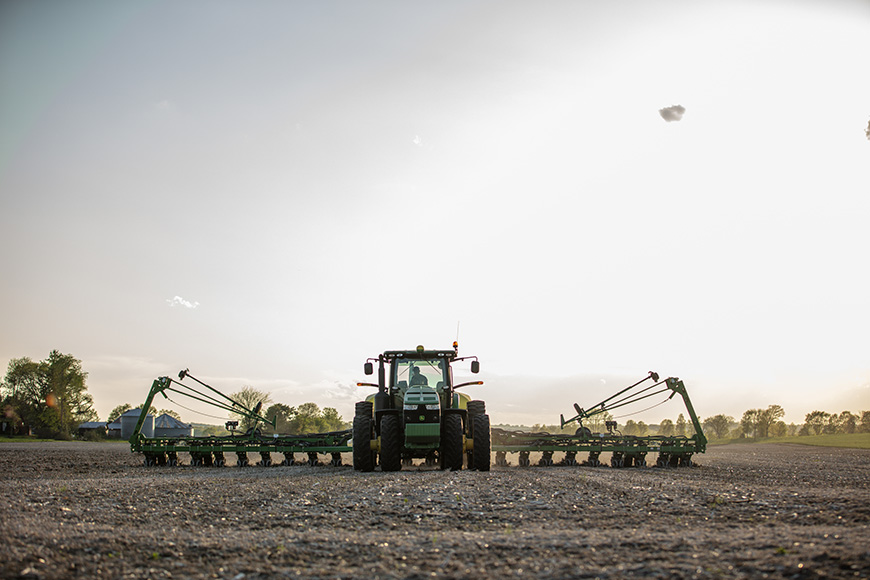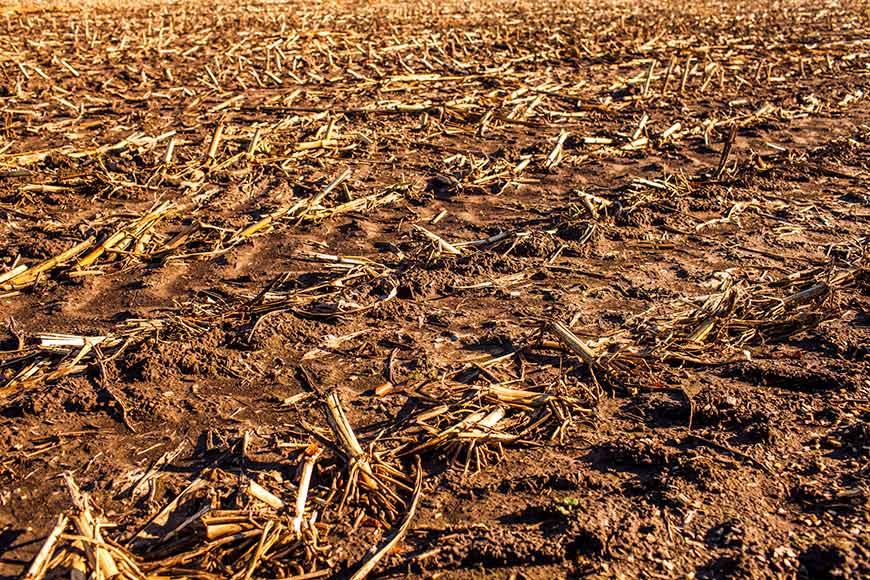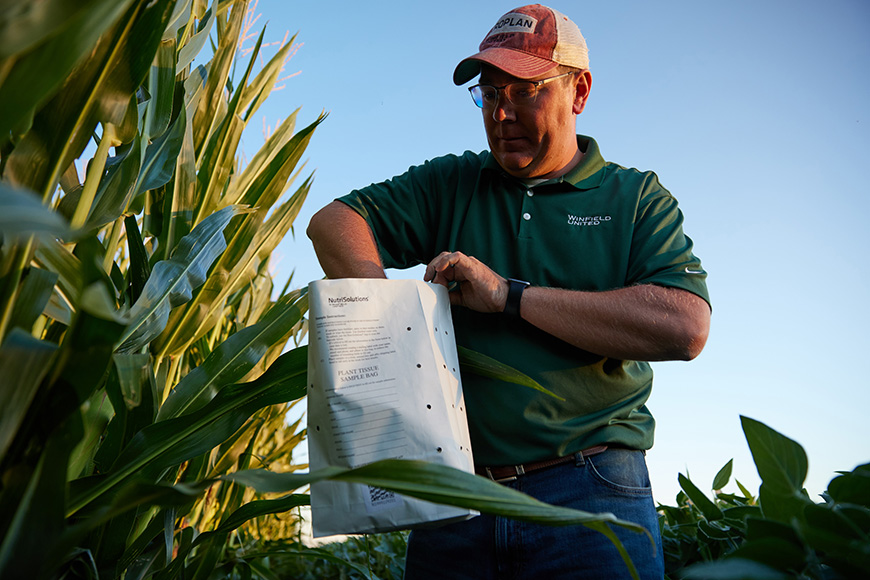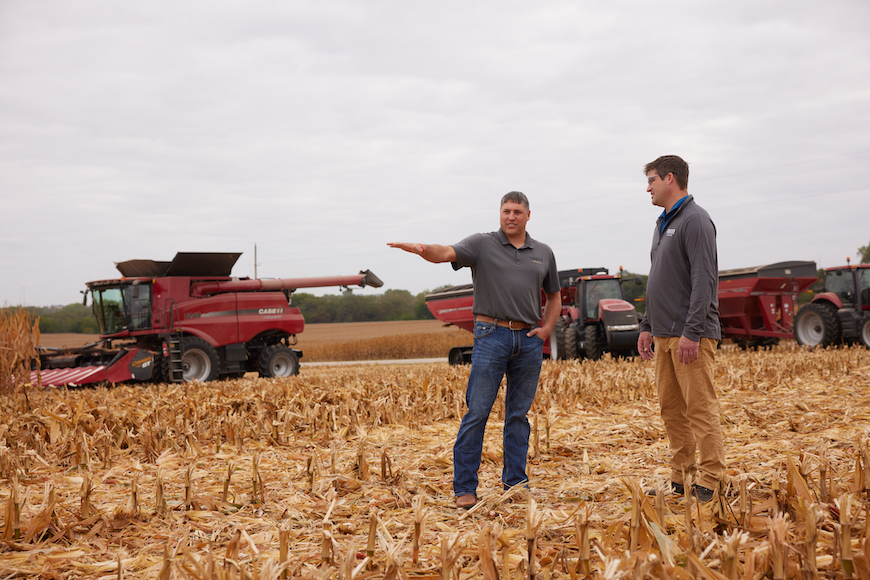Do You Need Starter Fertilizer For Corn?

We often get asked if starter fertilizer is worth the investment. Does corn really need it? Does it really make a difference? In short, yes. But let’s investigate further.
What Is Starter Fertilizer?
Starter fertilizer is a small amount of fertilizer placed closely to the seed at planting.
From until about the V3 growth stage, corn relies on nutrient reserves in the seed and the small seminal root system. Around V3, the plant has started to develop the nodal root system, which will be its main source of water and nutrients for the remainder of the growing season.
Starter fertilizers place essential nutrients near the roots of the developing seedlings and help sustain crop growth and development until the young seedling has an adequately developed root system to access nutrients.
Balanced starter fertilizers deliver key macro and micronutrients, making them immediately available to seedlings. Along with N, P and K, sulfur is needed for chlorophyll production and protein formation. The most common micronutrients in starter fertilizers are zinc for leaf growth and root development; manganese for chlorophyll production and nitrogen utilization; and boron for proper cell division, carbohydrate use and water utilization.
Balanced starter fertilizers help improve stand establishment, early-season crop vigor, provide for optimum uptake of the key nutrients and combat early-season plant stress issues.
When Should Starter Fertilizer Be Used?
Early in the growing season, crops can face cold, wet soil conditions. These conditions cause roots to grow more slowly, reduce mineralization rate of essential nutrients from soil organic matter and slow nutrient movement to roots. Starter fertilizers provide an immediately accessible nutrient source for roots.Specific planting conditions in which starter fertilizers show an increased benefit include:
- Soils testing low in P and K.
- Fields with increased crop residue, such as reduced and no-till fields.
- Early planting.
- Poorly drained or cold soils.
- Coarse textured and/or low organic matter soils.
- Soils with unusually high or low soil pH.
- When substantial drought stress is likely.
- In northern portions of the Corn Belt.
Starter Fertilizer Application Methods
Starter fertilizer can be applied in a band over the row, in-furrow, below the seed, to the side of the seed, or to the side and below the seed (2x2). Two of the more common placement methods in corn production are in-furrow and 2x2, each with their own advantages.The purpose of in-furrow placement is to increase early-season seedling growth with a small amount of fertilizer. With in-furrow placement, less fertilizer is applied per acre compared to 2x2. This means less fill-ups in the field and faster planting times.
The major consideration for in-furrow rates is the potential for salt injury to the germinating seed. Salt injury occurs when the fertilizer concentration in the soil solution around the seed is so high that water moves out of the seed and into the soil, resulting in dead plants and uneven stands. However, the rates listed in the table below should not cause significant injury to corn under most conditions.
Row Spacing (in.) |
N + K2O/ac (lbs.) |
|
Medium-Fine Textured Soils |
Sandy or Dry Soils |
|
| 40 | 6 | 4 |
| 30 | 8 | 6 |
| 20 | 12 | 8 |
| 15 | 16 | 11 |
| 12 | 20 | 14 |
| 10 | 24 | 17 |
| 6-8 | 30 | 21 |
Starter fertilizers placed via 2x2 allow for higher rates of N to be applied near the seed compared to in-furrow
placement. This allows the developing nodal roots to easily access nutrients and limits the potential for salt injury. However, because of the distance between the 2x2 fertilizer band and the developing roots, plants may not exhibit a “pop-up” effect of faster germination and emergence until roots grow into the fertilizer band.
Additional At-Plant Opportunities
Adding a plant growth regulator (PGR) like Ascend2® in your starter mix can provide additional developmental support to help achieve faster, more even emergence. Its auxin-dominant, patent-protected formulation is backed by years of data and proven to promote vigorous emergence and root development.An in-furrow application of Ascend2 PGR is a simple, convenient way to enhance early-season crop growth and stress tolerance. Based on Answer Plot® trials, corn treated with Ascend2 had a 7.5 bushel per acre yield advantage compared to crops that only received a starter fertilizer.1
For more information on starter fertilizer selection or corn management, talk with your CROPLAN® retailer. They’re well-equipped to help you manage all aspects of the acre, from seed to plant nutrition.




